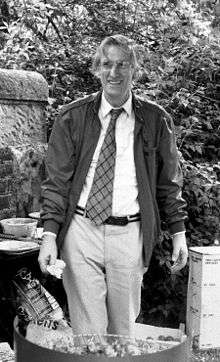Ainsley Iggo

Ainsley Iggo (2 August 1924 – 25 March 2012) was a New Zealand born neurophysiologist.
He was born in Napier, New Zealand and studied at a farming college in Invercargill, where he won a bursary to study Agricultural Sciences at the University of New Zealand. There he was awarded a research scholarship to continue his studies in Britain. After gaining a BSc in electrophysiology and neuroscience at the University of Otago in Dunedin, he moved to Aberdeen to join the Rowett Research Institute, an agricultural research facility of the University of Aberdeen. There he was awarded a PhD for his studies on the vagus nerve of sheep.[1]
He moved to Edinburgh in 1954, where he began as a lecturer in physiology at the Medical School of Edinburgh University before accepting the Chair of Veterinary Physiology at the Royal (Dick) School of Veterinary Studies of Edinburgh University in 1962. He played the major role in establishing the school, commonly known as the Dick Vet, into an internationally recognised centre of excellence, before becoming dean of the School. He remained as professor emeritus of veterinary physiology until his death.[1]
In 1958 he became the first scientist to demonstrate electrical recordings from individual C fibres, the thinnest of the body’s nerves and also defined the function of the various sensory receptors in the skin which detect touch, tickle, heat and pain. One of the receptors is now named after him.[1]
In 1973 he was a founder member and later president (1981–84) of the International Association for the Study of Pain (IASP). He was elected a Fellow of the Royal Society in 1978 and a Fellow of the Royal Society of Edinburgh.[1]
He died in March, 2012. He had married New Zealander Betty McCurdy in 1952, with whom he had 3 sons.[1]
References
External links
| Wikimedia Commons has media related to Ainsley Iggo. |